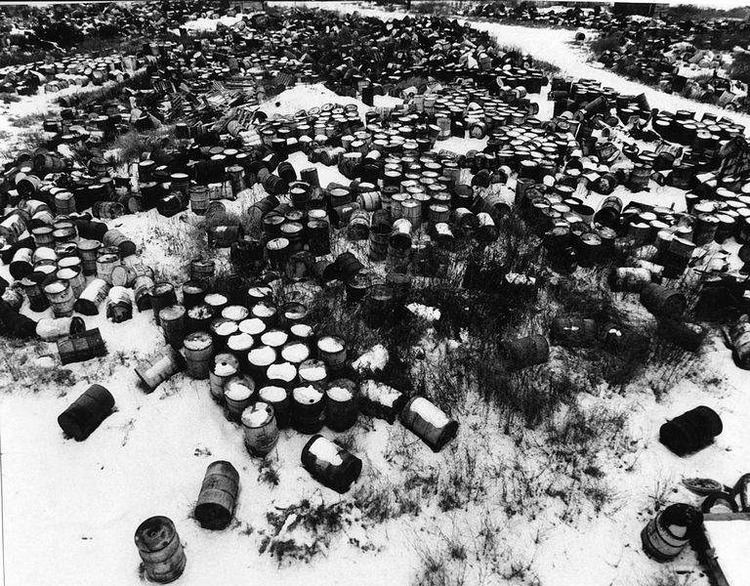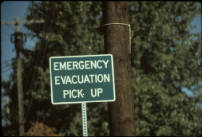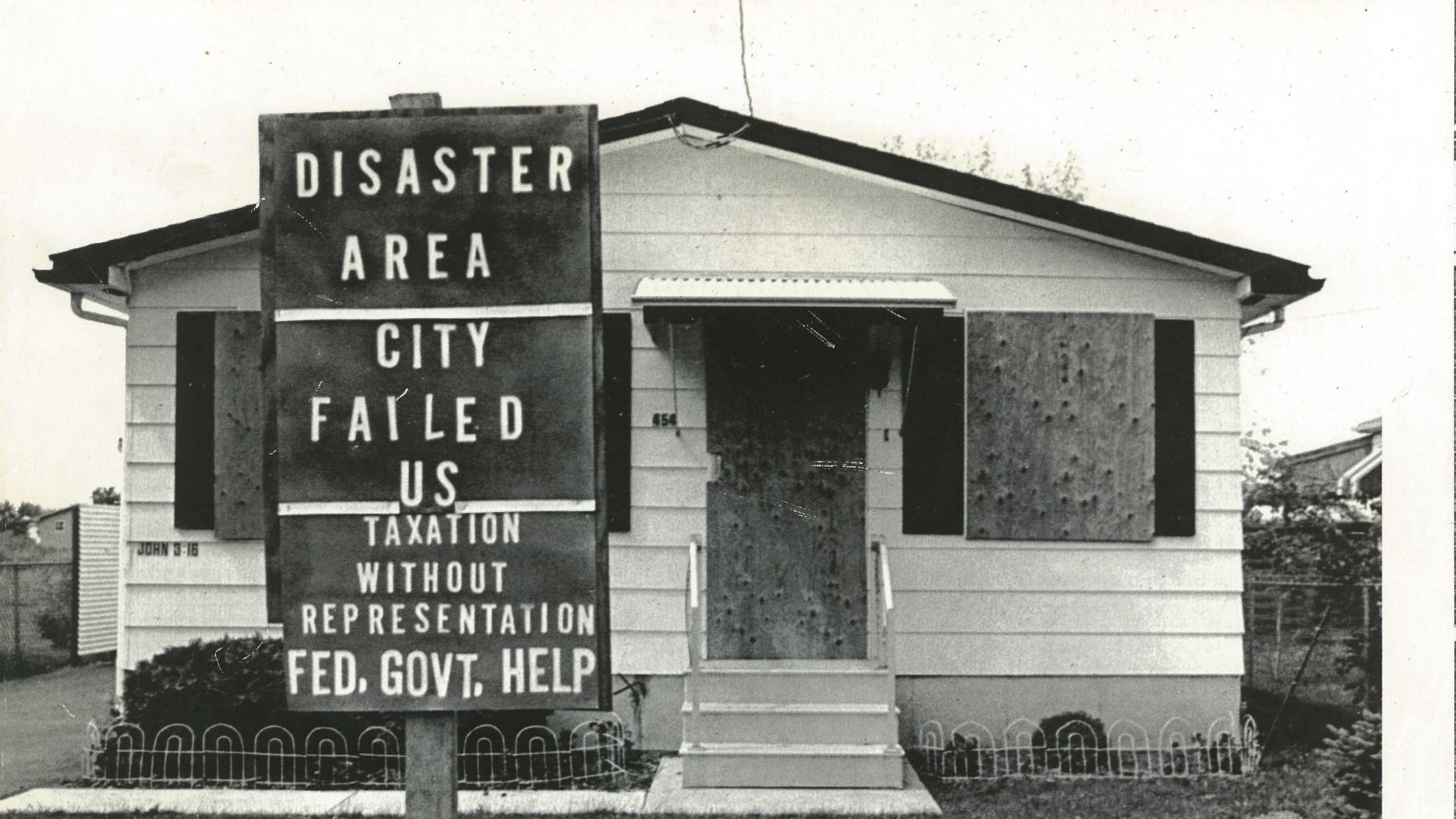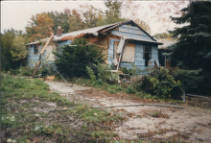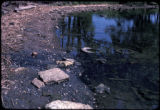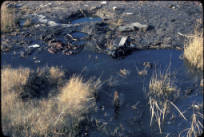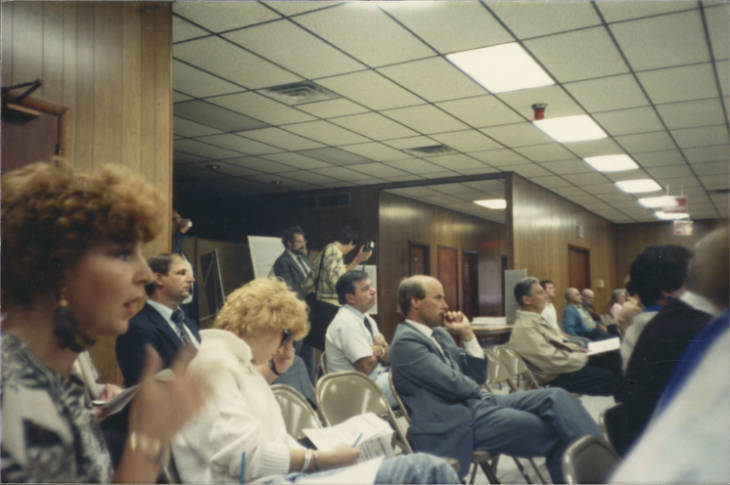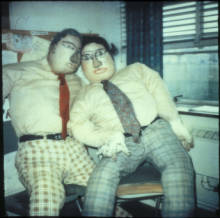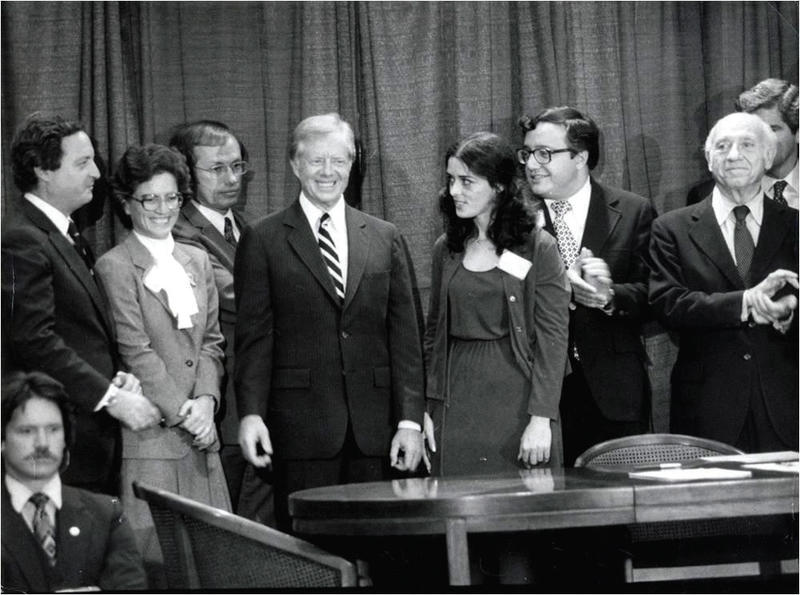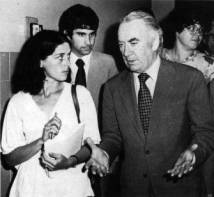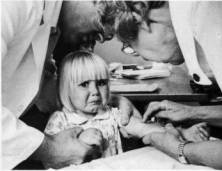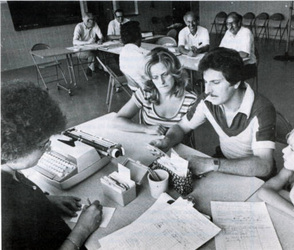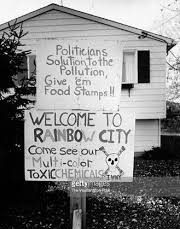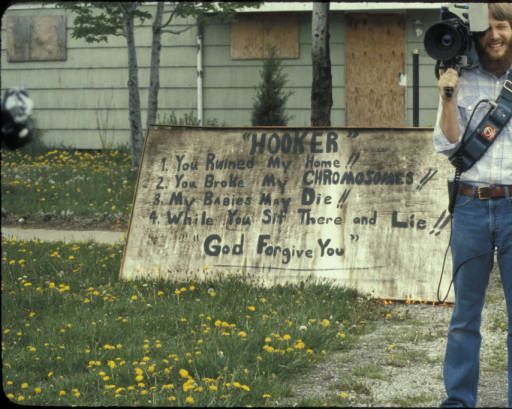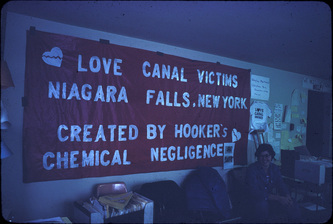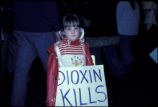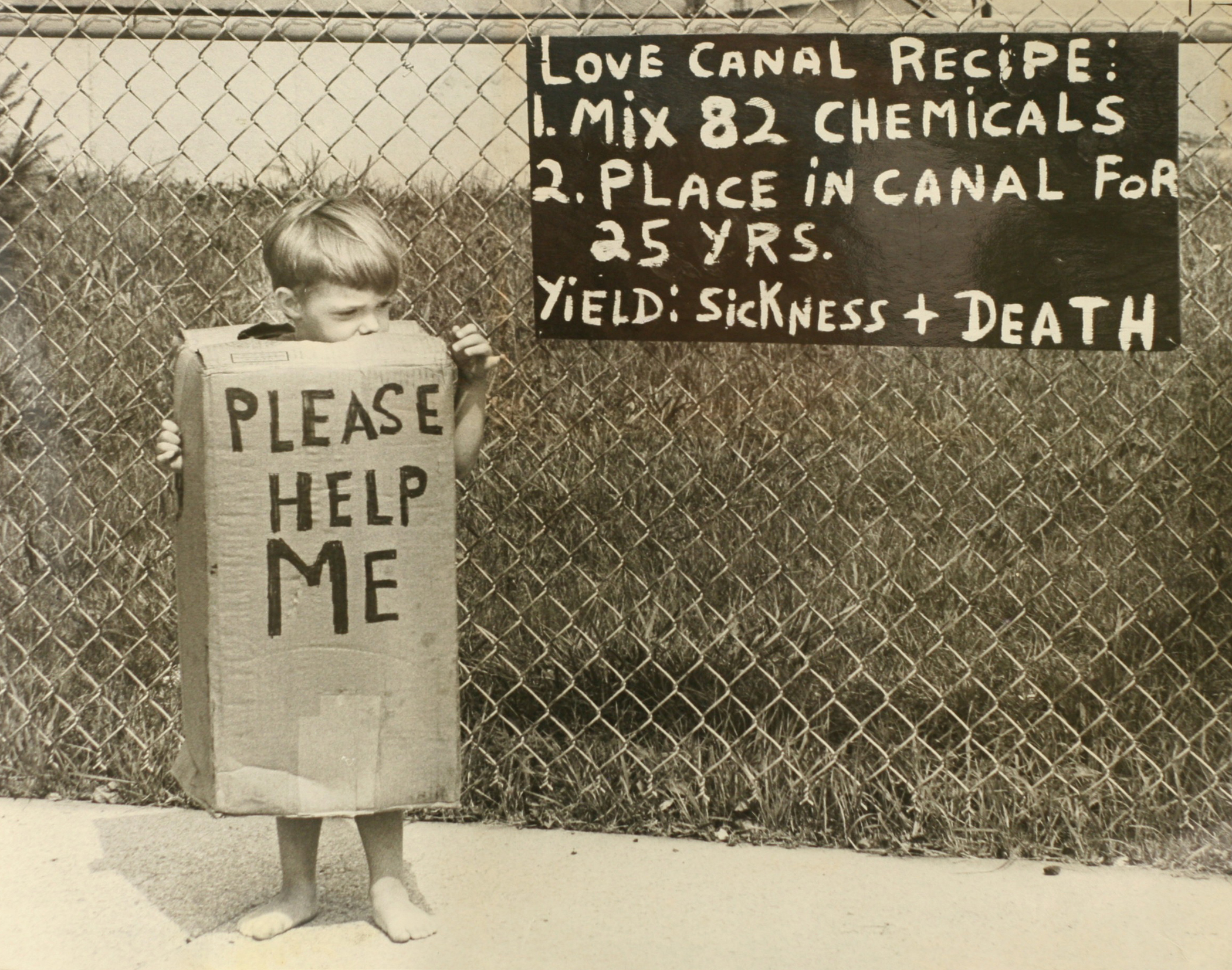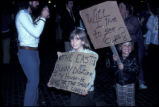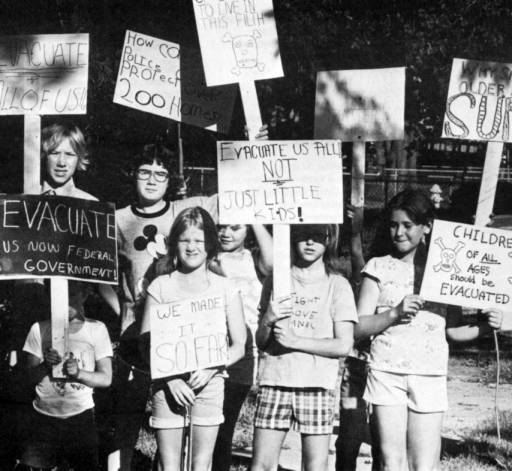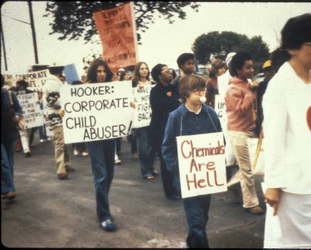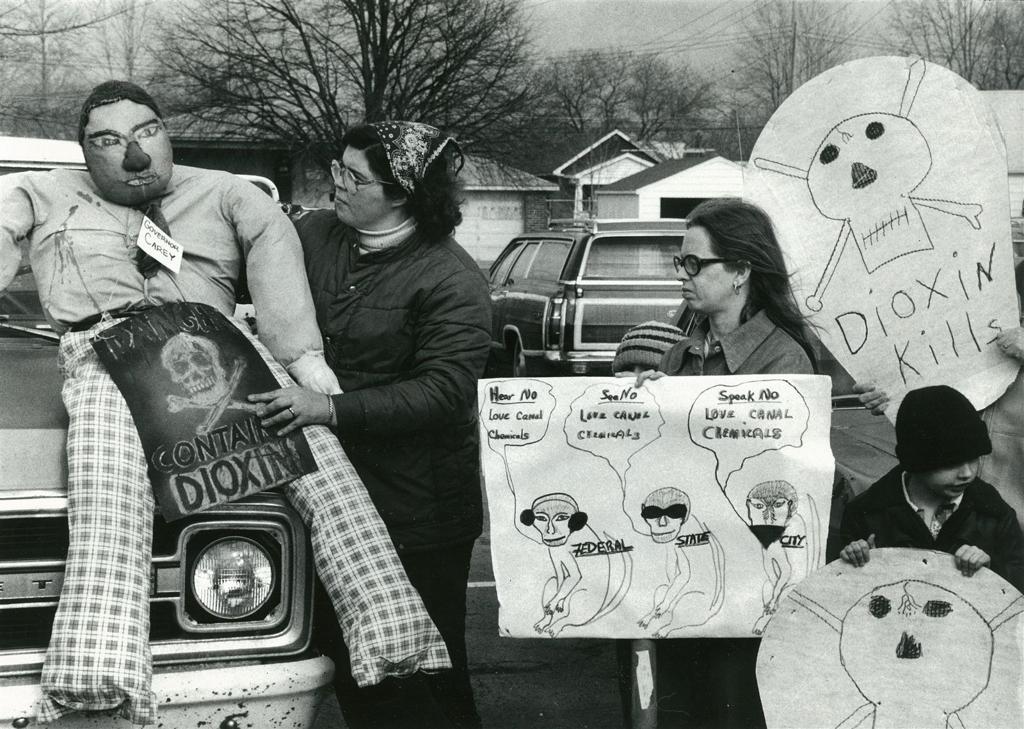Photographs of the Uproar
The events of Love Canal were seen and heard widely because the residents were able to garner the media’s attention. Photographers, journalists, and news reporters traveled to Love Canal to tell the story of the engaged residents and their increasing health risks. The Love Canal tragedy was in front of the public eye. The photos, stories, interviews, and news broadcasts permeated the country’s awareness far enough that President Jimmy Carter declared a national state of emergency at Love Canal. The tragedy of Love Canal was undeniable because of the countless evidence and exposure. The mass media attention was the driving force in the success of Love Canal. President Carter was up for reelection and the public was awaiting his decision about Love Canal. Therefore, the members of the Love Canal Homeowners Association were successfully able to convince the federal government to purchase their homes. The photo series below show the risk and relentless activism of Love Canal.
Quality of Life in Love Canal
(Source: “Love Canal Images.” New York Heritage. New York Heritage Digital Collection)
The town of Love Canal was first envisioned to be a “model city” with a flourishing economy. However, Love Canal became a chemical wasteland. The above photographs capture the grime, eeriness, and hazardous conditions that ruined the livelihood of the community. Figures 2.0-2.4 show the perilous contamination due to the improper disposal of the steel drums. The 21,800 tons of chemicals improperly stored eventually seeped into the ground into people’s homes, causing families to fall ill. Figures 2.12 and 2.13 show homes that are no longer habitable because they have become entirely contaminated. The residents had no choice but to leave their homes. The toxins have compromised the integrity and stability of their homes and their health. The Hooker Chemical Company’s careless disposal has ruined the habitability of Love Canal. There were countless “danger” signs warning residents to steer clear of contaminated areas as shown through Figures 2.5 to 2.11. Love Canal was infested with toxins and they permeated through the neighborhood, ruining the quality of life. Residents had to take precautionary measures to ensure their safety. Figure 2.17 shows a resident of Love canal wearing a face mask to protect herself from the fumes and lethal toxins in the area. Mask wearing is not favorable, but it is an excellent precaution to protect oneself. The residents felt that they needed face masks to protect their health as we do today amidst the Covid-19 pandemic. The urgency of the lethal life conditions of Love Canal becomes visible and undeniable through such photos.
Residents’ Rage
(Source: “Love Canal Images.” New York Heritage. New York Heritage Digital Collection)
The Residents of Love Canal ensured their local news became national news. Lois Gibbs spearheaded the Love Canal Homeowners Association (LCHA) to create unity among the residents. The story of a single person does not hold as much weight as the story of over 500 homeowners. Figure 3.0 shows the high volume of attendance to the LCHA meetings and town halls. The residents actively demanded change for their community to protect their health. They organized petitions, protests, and press conferences to ensure the chemical crisis in Love Canal ends. The residents stood alongside each other in solidarity as they protested against their government. These protests garnered media attention because the LCHA made prominent gestures such as setting ablaze puppets of President Carter and Mayor Carey as depicted in Figures 3.3-3.5. The residents made their fiery anger visible by literally setting flames to symbols of those in charge who are just letting the disaster unfold. The residents of Love Canal were flooded with grief and stress due to the health risks. Figure 3.6 shows Lois Gibbs setting up a Christmas tree with no holiday cheer. It is decorated with steel drum ornaments and laced with rope; nothing close to the holiday spirit. Also, it is topped with an angel wearing a sign reading “Hooker is no Angel”. The chemical disaster was all-encompassing and impacting almost every element of these residents’ lives: their homes, their health, where they sent their kids to school, their holidays, and their overall quality of life. Figure 3.7 shows the grief and melancholia experienced by a resident brought upon her due to the chemical disaster. The lethal contamination impacted the residents’ physical and mental health. It was imperative that the LCHA achieved its government buyout goal in order to ensure that the residents can leave Love Canal and find stability elsewhere. Figures 3.9 and 3.10 feature Lois Gibbs alongside President Carter and Mayor Carey respectively. The residents of Love Canal were able to position their small-town disaster at the forefront of their state and national governments in order to push for reform. They successfully achieved a federal buyout in 1978. All residents in the Emergency Declaration Area had the option of selling their homes to the Federal government in order to relocate somewhere safer.
Poster Signs
(Source: “Love Canal Images.” New York Heritage. New York Heritage Digital Collection)
Among the Love Canal protests, the poster signs stood out due to their sheer bluntness. The residents did not hold back on these signs. They expressed their anger on these cardboard signs in order for their voices to be heard. Figure 4.0 shows a man sitting on his front porch beside a poster reading “For Sale: 82 chemicals, you dig em” to highlight the immensity and the residents’ awareness of what lies beneath them. Figure 4.1 captures a poster that reads “welcome to Rainbow City come see out multi-colored toxins” as if to call out the absurdity of the toxins in their neighborhood that can not be cleaned. Love Canal seemed to develop many different names such as Rainbow City or even, as Figure 4.4 shows, “the killing ground”. These poster signs served as arrows that directly point to Hooker Chemical Company to focus the blame on the perpetrator. Little children would carry signs that were bigger than their own stature to show as if the lethal toxins have consumed and engulfed the livelihood and health of the residents and the future generation. These posters were provocative with statements such as “ will I be able to have a normal baby” and “will I see age 7” as shown in Figure 4.8. The two children holding these signs are Lois Gibbs’s son and daughter. Not only are the lethal chemicals affecting the health of the residents currently in Love Canal, but also the future kinds of those who were exposed to the lethal chemicals as if the contamination is irreversible and endless.


